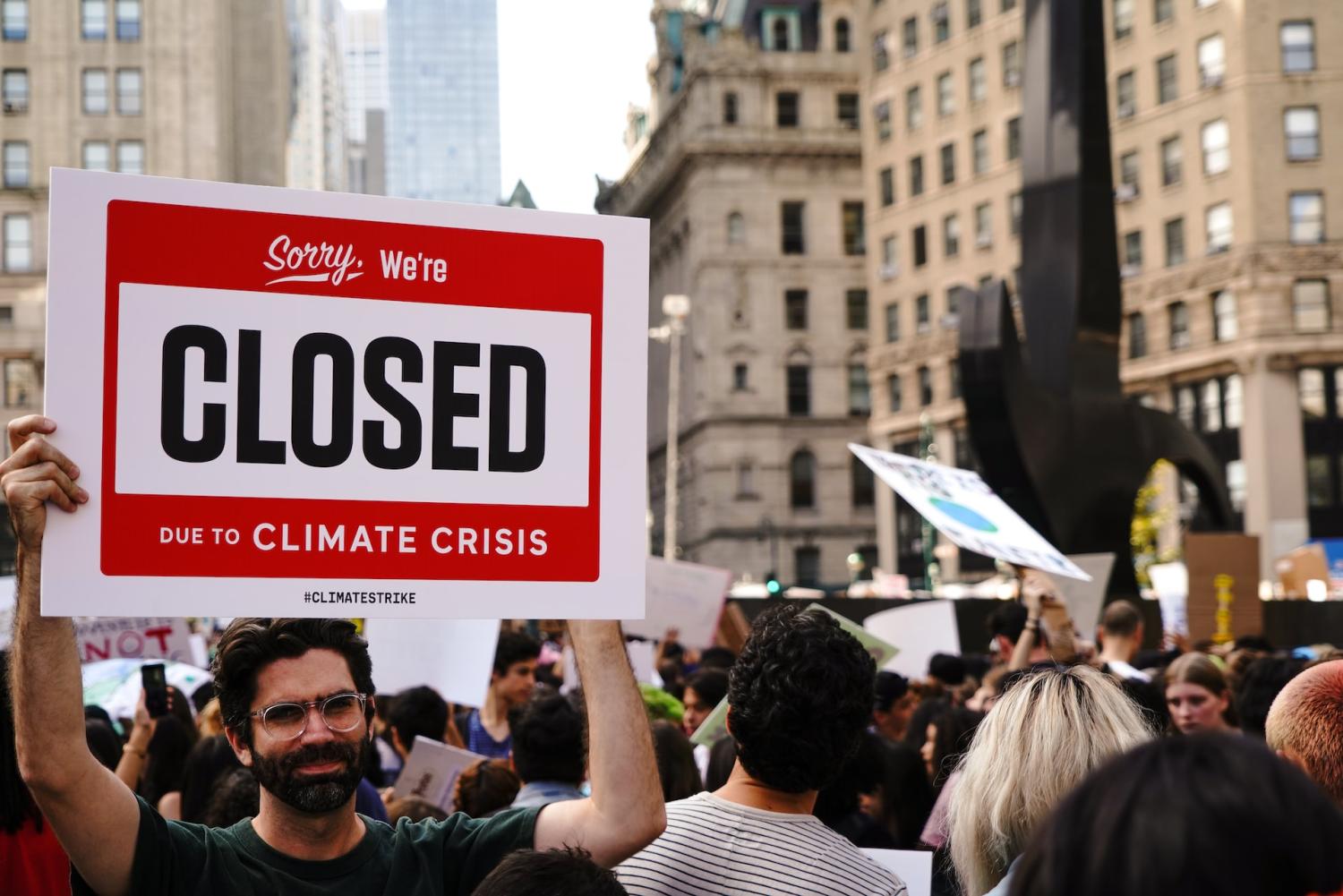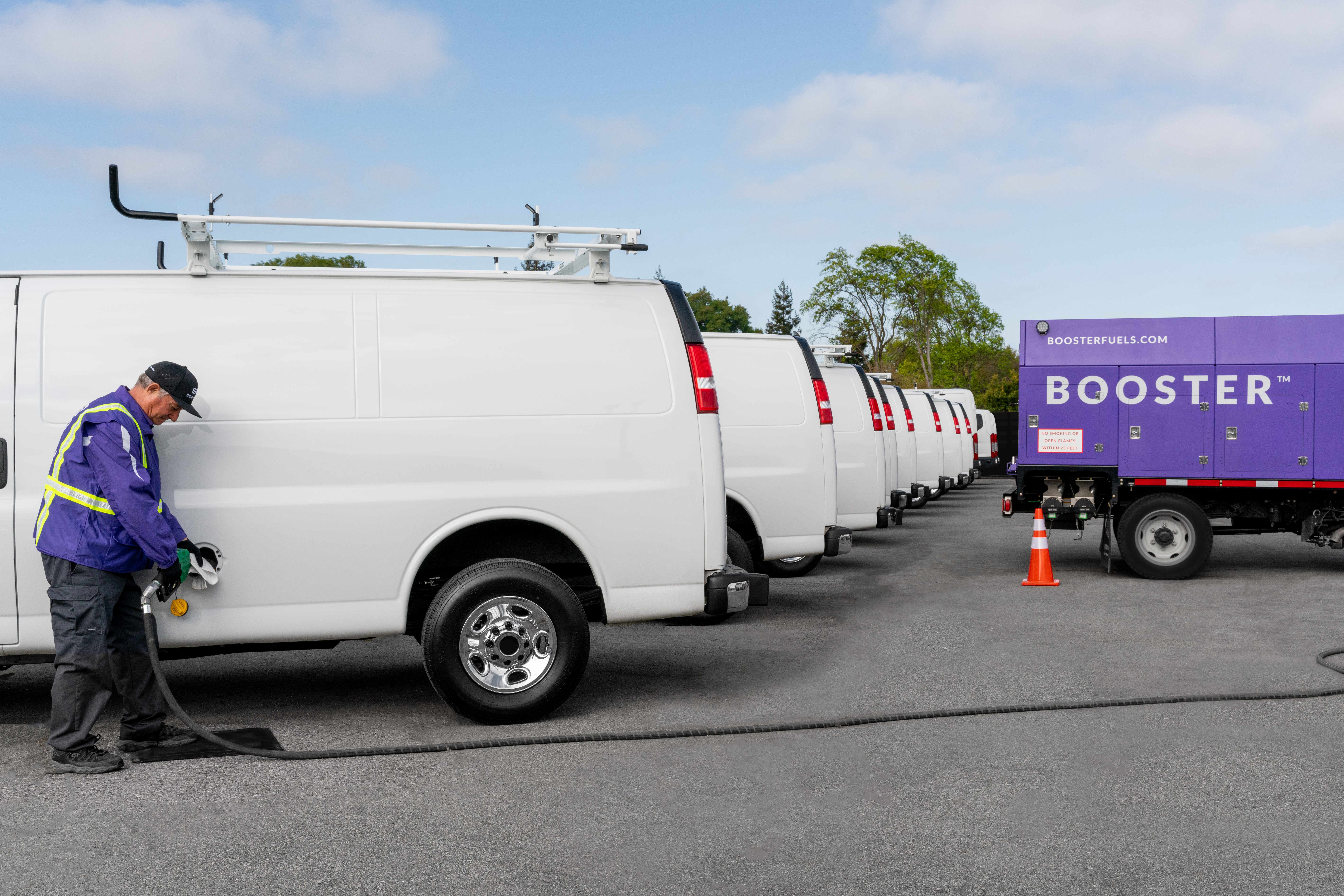Indigenous Peoples and Local Communities Need More Say In Where Their Conservation Funding Goes


A recent report shows that of the $270 million invested annually in conservation funding earmarked for forest management initiatives of Indigenous peoples and local communities, only a fraction reached a named Indigenous or community group.
The report, a collaboration between the Rights and Resources Initiative and the Rainforest Foundation Norway, assesses donor funding between 2011 and 2020. It found that while donors may claim their funding is in support of Indigenous peoples or local communities, only 17 percent of the funds named the group of people they were supporting.
This finding suggests that Indigenous peoples and local communities have relatively little say in how the dollars meant to support them are actually spent. The decision-making is mostly left to large international organizations and multilateral institutions.
Large organizations focus too much on results
Larger organizations have more resources at their disposal and are generally better organized to develop and deliver conservation programs, but their motivations are not necessarily aligned with those of recipient communities — and that’s what should be the top priority.
There’s a tricky balance to strike when we look at the donor-recipient relationship. Donors want to see results; they want to see that their dollars are having a direct impact on the issue they are supporting. In environmental stewardship, that might be planting a certain number of trees or protecting a targeted area of land — some statistic that a donor can identify with and feel rewarded for their contribution.
In another study, the nonprofit consultancy Root Cause found that 75 percent of donors want to see these sorts of results when they open their wallets. Of course, this information is important and provides confirmation that donor funds are indeed going to support the described cause, but it should not become the sole driver of conservation programs.
A narrowed focus on quantifiable impacts might neglect other, more important issues that a community is facing.
For example, engaging in legal battles to defend natural environments can be a costly, time-consuming process — one that might benefit greatly from additional funding. But how can one measure the avoided impact of an unfavorable ruling? It’s not a result that’s easy to report, and the uncertainty behind it does not necessarily entice donors to provide support. Trees planted, on the other hand, is easy to measure and easy to conceptualize.
In other words: Large organizations are well-practiced at providing the types of results that donors want to see. Local communities, however, are better at recognizing where funding can be best spent — whether that investment returns concrete, measurable results or not.
Involving locals in the decision-making process
The primary suggestion of the Rights and Resources report is that donors should support Indigenous peoples and local communities as, “implementers, leaders and partners — not merely beneficiaries.”
Local communities should have more input in how money meant to benefit them is spent. Roughly half of the funding for Indigenous peoples and local communities’ conservation efforts went to multilateral institutions and large international organizations, according to the report. Large international organizations are well removed from local communities and have greater overhead costs that can stretch donation dollars thin.
To ensure that funding is community-led, donors should instead build strong relationships with recipient communities and intermediaries with close relationships in the community such as national and local NGOs.
Indigenous peoples in particular should have their right to self-determination respected as outlined in the United Nations Declaration on the Rights of Indigenous Peoples (UNDRIP). This means, in part, allowing Indigenous peoples to freely pursue their economic, social, and cultural development.
What does this mean for U.S. businesses?
When businesses engage in conservation efforts or charity work, they should be aware of what local communities actually need, rather than planting trees and calling it a job well done.
The push for stricter environmental, social and governance (ESG) measures in the United States is leading to more businesses being mindful of their environmental impacts. Different mitigation efforts, like carbon offsetting, are becoming more popular in the business community. Many of the carbon offset programs available, however, fall into the same results-based trap mentioned above.
Engaging with local communities and Indigenous groups to ensure contributions are achieving their desired impact is a much more robust conservation strategy than waiting to count how many trees your money planted.
Are You Ready To Change the Way You Think About Climate Action?


As any engineer or scientist knows, in a complex system how questions are framed — and by whom — can make all the difference. Our planet is certainly one of the most complex systems there is. The challenge for humankind partly lies in generating new ideas around our planet’s survival, but also in escaping old ideas around its nature and purpose. Our mindset is a critical player in how much progress we make, in what directions, and how quickly.
The recent news that the Arctic is warming much more rapidly than predicted draws yet another line under the urgency for driving change. Extreme heat, wildfires and floods are forcing a tipping point in policy, business and individual action — and, perhaps most importantly, our own mindset. There’s no question this is not just a moment to listen to the science. This is also a human moment: a moment to listen to each other, to come together, face what is happening and agree on a path forward for our planet.
Interestingly, the science being done in the name of climate action isn’t just about new technologies such as renewables. Research is also taking place around how we think about the issue and how what we think determines how we act. Human thought and interaction also form a complex and rarely predictable system — just think about the unfolding human experiment that is social media.
There are also many different but related discussions around climate which are increasingly converging as the situation becomes more dire. Research being done by academics such as Christine Wamsler and others at the Lund University Centre for Sustainability Studies in Sweden highlights the importance of how we think about the problems before us. Changing how we think about our planet is just as critical as building new sustainable technologies. Our mindset influences how we approach problems, and also how we influence other people to adopt new ways of thinking about climate action.
Researchers at Yale’s Program on Climate Change Communication have actually grouped the public into six segments around their attitudes toward climate change: alarmed, concerned, cautious, disengaged, doubtful and dismissive. From 2009 to 2019, the proportion of those alarmed has doubled while those cautious, doubtful and dismissive have shrunk. Expectations on businesses to take climate action continue to increase across customers, employees, shareholders and regulators.
The telecommunications industry may only account for about 1.4 percent of global carbon emissions, but we are seeing strong collaboration across technology providers and network operators taking firm climate action — a conversation also strongly promoted by GSMA, our global trade association. More importantly, our industry has the potential to reduce over 15 percent of global carbon emissions by enabling an accelerated digital transformation across industries.
Ericsson has always taken a science-based and collaborative approach toward climate change, and we have been making steady progress toward our goal of net-zero emissions in our own activities by 2030 and across our entire value chain by 2040. We can do a lot fast: Our own research reveals that the information and communications technology sector can reduce its carbon footprint by 80 percent just by switching to renewable energy sources.
We see further potential by introducing smart energy management solutions, leveraging lithium-ion batteries to reduce the dependencies on diesel generators, which extend to also offloading the public utility grid during peak utilization. In our ambition to pioneer a sustainable future, we are piloting advanced use cases based on 5G, XR, AI and digital twins, for example, to transform our own operations at our U.S. 5G Smart Factory in Texas. Our progress to date has led to the World Economic Forum recognizing our factory as a global front runner in the Fourth Industrial Revolution, awarding the site with its prestigious Global Lighthouse designation in recognition of our deployment of next-generation technology at the site and its subsequent impact.
In approaching the fundamental question of “what is to be done” about climate change, it is our mindset that will help shape the outcome. Viewed through that lens, the work we are doing as a company in the name of our “imagine possible” vision is so much more than an aspirational phrase — it represents a very real and desirable shift in how we view the problems we are facing as human beings.
Like it or not, money is an indicator of the value we place on something. The sheer size of the funding appropriated for climate programs in the U.S. indicates a shift in the value governments and, by extension, their citizens place on our planet and ensuring its sustainable future, which is very encouraging to see.
Markets and investors will respond according to the additional certainty that both private sector and government funding represents. There are increasing signals to the market that we are adopting a long-term view in addressing climate change, which is clearly fundamental for driving exponential climate action and protecting ourselves and our planet for generations to come.
Previously published on Ericsson.com and the 3BL Media newsroom.
Image credit: Annie Spratt/Unsplash
New USDA Program Connects Farmers with Financial Benefits of Carbon Sequestration in Soil


More farmers are beginning to adopt regenerative farming practices that focus on building soil health, and now the U.S. Department of Agriculture has come up with a new program to help accelerate the movement. Called Partnerships for Climate-Smart Commodities, the program focuses squarely on carbon sequestration markets as well as soil-building methods.
What is regenerative farming?
Regenerative farming can have different shades of meaning. As interpreted by the U.S. Department of Agriculture, the central theme encompasses farming practices that conserve renewable resources. The 20th-century publisher, author and organic farmer Robert Rodale is credited with popularizing the concept.
Under the modern interpretation, contributing to biodiversity and community well-being are also essential elements of regenerative farming. In addition, the Joe Biden administration emphasizes equity and inclusion across all of its initiatives.
Spotlight on soil health in the era of climate change
The emphasis on soil health has taken on new significance as the real-world impacts of climate change takes shape. Researchers are compiling more data on the ability of soil to sequester carbon. That provides policymakers with a potentially powerful toolkit in the climate action toolbox.
By “climate-smart,” the organizers of Partnerships for Climate-Smart Commodities refer to practices that are consistent with regenerative soil-building principles, including the use of cover crops, no-till farming and nutrient management.
The USDA has generations of experience in assisting farmers on an individual basis. But this partnership is different. It is designed to promote systemic solutions that can be shared among thousands of farms. The end goals are to encourage farmers to deploy their land for carbon sequestration, and to connect them with financial opportunities in the carbon sequestration and sustainability markets.
Overwhelming demand for climate-smart farming
The partnership itself demonstrates the strong interest of researchers, farmers and other stakeholders in carbon sequestration. The program opened for applications in February and was quickly swamped with hundreds of proposals, leading the USDA to arrange for a second, upcoming round of funding.
Meanwhile, last week the program announced its first round of 70 projects. The USDA expects this first group of projects to cover more than 50,000 farms, engaging up to 25 million acres or more in climate-smart methods.
“More than 50 million metric tons of carbon dioxide equivalent [will be] sequestered over the lives of the projects,” the USDA estimates. “This is equivalent to removing more than 10 million gasoline-powered passenger vehicles from the road for one year.”
A systemic approach to carbon sequestration in soil
In a press announcement on Wednesday, the USDA highlighted five projects that showcase the potential for a broad impact on carbon sequestration. The five projects are expected to span up to five years each:
The Climate-Smart Agriculture Innovative Finance Initiative, led by the organization Field to Market, will assist climate-smart farmers with new financial tools and other support. Farms in more than 30 states are expected to participate.
Scaling Methane Emissions Reductions and Soil Carbon Sequestration, led by Dairy Farmers of America, will apply the cooperative business model to help farmers to connect with opportunities in the low-carbon dairy market.
The Soil Inventory Project Partnership for Impact and Demand, led by The Meridian Institute, will help farmers and other stakeholders to measure carbon in their soil and share it with an open-access database. The project includes farms growing value-added crops and direct-to-consumer specialty crops, as well as the 19 most common row crops in the U.S.
Developing Climate-Smart Beef and Bison Commodities, led by South Dakota State University, will connect climate-smart grazing and land management practices with market opportunities.
Traceable Reforestation for America’s Carbon and Timber, led by Oregon Climate Trust, will help restore lands impacted by wildfire in the West. The project also covers depleted agricultural land in the South. It includes verification of climate benefits for every acre planted, and for the volume of forest products generated.
First came "woke capitalism"... is "woke farming" close behind?
The partnership’s equity provisions are reflected in the inclusion of underserved communities and minority-serving research institutions in the first round of 70 projects. For the second round, the USDA is focusing more specifically on equity and inclusion.
“USDA is currently evaluating project proposals from the second Partnerships for Climate-Smart Commodities funding pool, which includes funding requests from $250,000 to $4,999,999," the USDA explains. "Projects from this second funding pool will emphasize the enrollment of small and/or underserved producers, and/or monitoring, reporting and verification activities developed at minority-serving institutions."
The emphasis on equity and inclusion could raise red flags among Republican office holders and candidates as the 2022 midterm election cycle heats up. After all, some high-profile Republican officials in Texas, Arizona and elsewhere have already taken up the “woke capitalism” canard against the firm BlackRock, along with other financial institutions engaged in the ESG (environmental, social governance) movement.
The slur could just as easily apply to the ongoing effort to relieve U.S. farmers from fossil energy costs. What could be called “woke agriculture” has been a feature of USDA programming since the 2002 Farm Bill, which established a carbon-cutting program called REAP (Rural Energy for America Program).
REAP covers grants and loan guarantees for renewable energy and energy efficiency upgrades on farms, as well as renewable energy feasibility studies and other technical assistance. The USDA has also been leveraging agricultural biogas to help decarbonize livestock operations, organized under the Biogas Opportunities Roadmap.
The Department of Energy has also been active in the effort to reduce the fossil energy footprint of farming. One example is agency’s R&D work in the field of agrivoltaics, which overlaps with the field of regenerative farming.
On-farm electrolysis systems is another avenue of Energy Department exploration. The systems would run on electricity from co-located wind turbines or other renewable energy sources to produce green hydrogen gas. Farmers could deploy the hydrogen as fuel, use it as a feedstock to produce their own ammonia fertilizer, or sell it for new revenue.
The U.S. economy is decarbonizing, one way or another
The right-leaning U.S. Supreme Court stymied federal enforcement of greenhouse gas emissions with its Clean Power Plan ruling last summer. That means federal agencies need to rely on incentives and bottom-line motivation to steer the economy in a more sustainable direction. The Partnerships for Climate-Smart Commodities is just one example. Another example is the newly released Industrial Decarbonization Roadmap. The new Inflation Reduction Act of 2022 is also front-loaded with new funding for decarbonization, with an assist from last year’s Bipartisan Infrastructure Law.
It seems Republicans who hitched their star to the “woke” canard will have their hands full as the Biden administration continues to move forward with carbon-cutting programs that build bottom-line benefits across the U.S. agriculture industry and other sectors of the economy.
More information about the Partnership is available at usda.gov/climate-smart-commodities and usda.gov/climate-solutions.
Image credits: Benjamin Davies and Ryan Searle via Unsplash
What the World's First Bio-Based Vitamin A Means for Sustainability


The solution for producing the world’s first fully bio-based Vitamin A has emerged from a common microorganism that is found in countless food products.
The Netherlands-based health, nutrition and bioscience firm DSM has begun customer sampling of the new bio-based Vitamin A. It is the result of pioneering research by the company’s scientists and the development of a proprietary manufacturing process perfected for initial use in environmentally conscious cosmetics products.
“We realized we had something revolutionary at hand when we first isolated Vitamin A out of a bio-broth with a profile consistent to our existing process,” said Ronald Gebhard, DSM’s vice president of biosciences and process innovation, in a public statement. “Our new fully bio-based process relies on commonly available renewable raw materials and results in a lower carbon footprint and less waste while still delivering the industry-beating quality expected of DSM.”
What is Vitamin A, and how is it manufactured?
Vitamin A is considered essential for good health, immunity and digestive systems. It is naturally found in eggs, dairy products, and certain vegetables and fruits, but the form that is used for commercial products must be manufactured. DSM is one of the world’s leading producers of Vitamin A, manufacturing the vital ingredient at a state-of-the-art facility in Sisseln, Switzerland, from where it is then applied in human and animal health products, in food and in feed, as well as for personal care and cosmetics markets around the world. The form of the vitamin used for skincare, known as retinol, is one of the most effective treatments against signs of aging, popularly used to reduce fine lines, wrinkles and blemishes as well as increase collagen production.
Manufacturing Vitamin A at scale became possible following a 1947 scientific discovery at Hoffmann-La Roche, the vitamins business of which was acquired by DSM in 2003. Traditionally, Vitamin A is derived from fish liver oil or synthesized from acetone, a colorless organic liquid compound that is highly volatile and flammable. Further, acetone is derived from fossil fuels, which presents a long-term sustainability challenge.
Instead, DSM’s new process for producing Vitamin A uses a specially developed strain of yeast discovered in DSM’s research and development labs in Lexington, Massachusetts, that converts a renewable, locally-obtained carbon source into Vitamin A. The nature-inspired process has since been refined and proven to be scalable thanks to a global collaboration across six DSM facilities in the U.S., the Netherlands, Germany and Switzerland.
New manufacturing process cuts carbon footprint and reduces waste
The fully bio-based proprietary production method has the potential to transform the industry, advancing the environmental ambitions of DSM and its customers across the personal care and cosmetics, food, human health, and animal health markets.
“Until now, the only way to meet the growing demand for Vitamin A has been to build new multi-step chemical production facilities requiring more finite resources,” said Joerg von-Allmen, vice president of vitamins category management at DSM, in a statement. “DSM’s new bio-based process will significantly reduce the carbon footprint and waste of Vitamin A manufacturing while still producing the top-quality customers expect.”
Moving forward, DSM will increase its manufacturing capacity only through its bio-based process using renewable resources, von-Allmen said.
“As a vocal climate action advocate and leader in this field, we expect this breakthrough to trigger all Vitamin A manufacturers worldwide to reconsider how they will invest to accelerate the transition to a healthier future for people and the planet away from the traditional chemical processes that are based on finite resources,” he continued.
The new process has received an “overwhelmingly positive response,” and DSM plans to commercialize the bio-based Vitamin A in the personal care industry starting in 2023, said Parand Salmassinia, vice president of personal care at DSM.
“Vitamin A is one of the most in-demand and trusted cosmetic ingredients on the market, and we will now be able to offer an alternative with significant environmental advantages,” Salmassinia said in a statement. “Our innovation will help DSM’s customers lead their product categories in sustainability, offering a considerable contribution to their climate change actions and net zero goals.”
Salmassinia told PersonalCareInsights that she hopes that the innovation will offer brands, especially in facial skincare, “the opportunity to offer consumers more choices that align with their values.”
“Retinol, specifically, enjoys high awareness among consumers thanks to its trusted image and superior efficacy and we expect a rise of retinol-based products,” she explained.
The development of fully bio-based Vitamin A and the process for manufacturing the ingredient is in line with DSM’s strategic position that “sustainability is a core value.” The company has set four key nutrition goals, including advocating healthy and balanced nutrition for all, improving the nutrient content both of feed and of food, enabling the feeding of the world’s growing population on the basis of the finite natural resources available, and reducing the eco-footprint of food production, “which means keeping it within planetary boundaries.”
“Our pioneering work is a testament to our scientific capabilities and the passion of our scientists around the world who are striving to create better health for people and the planet,” Gebhard said.
This article series is sponsored by DSM Animal Nutrition and Health.
Image credit: fidaolga/Adobe Stock
Electric Vehicles Are Good, but Industrial Decarbonization is Even Better


For all the publicity surrounding electric vehicles, getting millions of Americans to drive a battery-powered car is just one piece of the decarbonization puzzle. Reducing industrial emissions is a more daunting task, and the Joe Biden administration has just announced a new plan to tackle the challenge head-on — hopefully, without running afoul of roadblocks at the U.S. Supreme Court.
The need for a national plan on industrial emissions
Zeroing out emissions from vehicles is important, and electric vehicles have key role to play in that endeavor. However, buying a new electric car is not the only way for would-be climate heroes to help reduce greenhouse gas emissions related to mobility.
Walking, biking, carpooling, combining errands, shopping locally and using mass transit are familiar ways to reduce an individual’s transportation-related emissions without having to buy a new car. Remote work, Zoom conferencing and other recent trends can also help.
In contrast, individuals have little — if any — control over emissions from industrial operations. A national plan based on federal policies is the only effective way to accomplish that, considering the urgent need to accelerate action on climate change.
Bringing down industrial greenhouse gas emissions is just as vital as emissions related to vehicles. According to the most recent data from the U.S. Energy Information Administration, industrial operations account for about 30 percent of carbon dioxide emissions in the U.S. That’s almost as much as the entire transportation sector, estimated at 35 percent.
The monumental task of industrial decarbonization becomes even more clear when emissions from industry are compared to emissions from passenger vehicles alone. Removing the 30 percent annual emissions from industry would be the equivalent of taking 631 million gasoline-powered passenger vehicles off the road.
Why not simply hand the decarbonization task to the EPA?
A new industrial decarbonization effort does not have to start from scratch. After all, the U.S. Environmental Protection Agency has been regulating emissions from power plants and other industrial operations since the 1970s.
However, that route has been tried before. Back in 2015 the Barack Obama administration proposed the Clean Power Plan, which would have clarified the EPA's authority to regulate greenhouse gas emissions under the Clean Air Act. That plan never took effect. It was quickly challenged in court by fossil energy stakeholders and their allies.
The administration of former President Donald Trump followed up with a less ambitious proposal called ACE, or the Affordable Clean Energy rule. That plan was also challenged in court, this time by environmental organizations and their allies.
The Biden administration never got the chance to revive the Clean Power Plan or formulate a plan of its own. The legal and constitutional standing of the EPA was stripped last summer, when the 6-3 majority of Republican-appointed justices on the U.S. Supreme Court issued a ruling that curtailed the EPA’s authority to regulate greenhouse gas emissions.
Over and above that particular ruling, the current court has earned a solid reputation for overturning precedent and issuing opinions that appear more political than constitutional. For that reason, any new federal action on greenhouse gases needs to tread lightly around the EPA and seek new pathways.
The roadmap for industrial decarbonization
Rather than focusing on energy use in power plant emissions, the new Biden administration plan zeroes in on energy in other industrial operations.
The new plan avoids any new constitutional minefields because it does not activate the regulatory authority of the EPA or any other federal agency. It is simply a set of recommendations for public- and private-sector investment opportunities issued by the U.S. Department of Energy as the new Industrial Decarbonization Roadmap.
The plan focuses on iron and steelmaking, cement and concrete, food and beverage production, chemical manufacturing, and petroleum refining. These five sectors account for more than half of the energy-related carbon dioxide emissions in the industrial sector.
The plan lists four pathways for addressing energy-related emissions among these sectors, including energy efficiency, electrification, the use of lower-carbon fuels, and carbon capture with reuse or storage.
Among these four pathways, the Energy Department singles out energy efficiency as “the most cost-effective option for near-term reductions of greenhouse gas emission.” In addition to improvements in equipment and other hardware systems, this area embraces software-driven, “smart” manufacturing systems and advanced data analytics that improve productivity related to energy use.
Another Republican fly in the ointment
This all seems relatively harmless, especially to the extent that it helps investors and industry stakeholders improve their bottom lines by cutting fuel costs while creating new jobs and improving public health along the way.
Nevertheless, state-based Republican office holders have already been sharpening their knives against private-sector stakeholders who seek to invest in decarbonization.
Last fall, for example, Republican office holders in Texas passed a law forbidding public pensions in the state from doing business with any firm that “boycotts” fossil energy companies.
More recently, Texas Attorney General Ken Paxton joined with 18 other Republican state attorneys-general in August to sign a letter addressed to the top asset management firm BlackRock. The letter accused BlackRock of discriminating against fossil energy companies.
BlackRock had previously provided Texas officials and other energy stakeholders with a detailed rundown of its considerable fossil energy investments in the Lone Star State, so it is unclear exactly why Paxton and the other attorneys-general chose to level such a patently false accusation specifically against this one firm.
However, the letter does serve as a warning shot. Other investors who see new opportunities in the Energy Department’s new Industrial Decarbonization Roadmap will have to tread carefully if they want to avoid becoming the next target of a high-profile accusation.
Money talks, hopefully
Meanwhile, the Energy Department is hoping that a new funding pot of $104 million for advanced industrial decarbonization technologies will motivate researchers and entrepreneurs to ignore the noise from right-wing electioneers as the 2022 midterm cycle heats up.
The new industrial emissions grant opportunity will focus on high-impact proposals that decarbonize key areas. That includes advanced reactors and separations systems in the chemical industry, clean fuels or electrification in iron and steel, and improved process heating systems for food and beverage operations.
In the cement and concrete area, the Energy Department is looking for new formulations as well as low carbon fuels and carbon capture.
Innovation in the paper and forest products industry is also covered by the grant opportunity, as well as technologies that apply to multiple sectors including the use of low temperature waste heat to for power, thermal energy storage, and industrial-scale heat pumps.
As Activists Swarm to Save Endangered Monarch Butterflies, Most Companies Sit Idle


The loss of the endangered monarchs could result in its own disastrous “butterfly effect" across the global food system. To that end, a tornado of activists are flapping their wings to give a helpful wind of momentum and allow the population of monarch butterflies to recover.
Since 2015, the Monarch Joint Venture has collaborated with mayors across the U.S. with the Mayors for Monarchs initiative. The program encourages mayors to pledge their support for the monarch and details actions that local communities can take to help the butterflies.
By planting milkweed and other native plant species, for example, individuals are improving soil health and water retention, which will increase monarch habitats. After that, everyday people can work to ensure those habitats aren’t once again threatened by corporations.
“Consumers can apply pressure to corporations by demanding pollinator-friendly agricultural techniques, halting individual purchase and use of chemical toxins, and demanding corporate retailers stop carrying toxic products that harm pollinators and other species,” said Jeanne Dodds, the creative engagement director for the Endangered Species Coalition.
A corporate call-to-arms to save monarch butterflies
A swarm of monarch butterflies is a breathtaking sight, and equally breathtaking are the activists organizing to save the newly endangered species from annihilation. But for all the reporting on what individuals can do to help save the monarchs, there has been far less coverage on the role of corporations.
Everyday people didn't cause monarch butterflies to decline in the first place, and they probably can’t revitalize the monarch population without help. The business world needs to join the conservation crusade.
After all, it is global corporations, not individuals, that are fueling the butterfly genocide in the first place, yet most international corporations are nowhere to be found in the monarch discussion.
So far, it’s a small list of companies working to save pollinators
Some businesses have entered the fray in support of America’s insect. The Monarch Joint Venture lists eight companies that donate money to the organization, and they aren’t the only businesses getting involved.
“Clif Bar, which donates to the Endangered Species Coalition, advocates for monarch and other species conservation by signing on to advocacy letters to decision-makers and by consistently funding projects to increase monarch and pollinator habitat,” Dodds said. “Endangered Species Chocolate and Amy’s Kitchen also advocate for monarch conservation.”
A re-think of business models is needed
Beyond advocacy, companies must review and revise business practices that threaten monarch butterflies and their habitats.
“Land use change as a result of corporate monocultural agriculture is a primary cause of pollinator decline,” Dodds explained. “Large-scale corporate farming monocultural techniques such as removing milkweed in favor of a single crop and intensive toxic use on plantings must be reduced in order to increase habitat for monarchs and other pollinating species.”
The practical consequences of losing the monarch butterfly are enormous, but in a more sentimental sense, the extinction of the species would be the extinction of something uniquely wondrous and irreplaceable. The monarch is iconic — it is America’s insect. Without it, the world loses a pollinator, yes, but it also loses swarms of stunning little creatures, nevermore to soar through blue skies with orange-winged comrades.
“When we lose any individual species, the diversity and richness in the world is diminished,” Dodds said. “Loss of iconic species, like the monarch butterfly, are especially devastating and visible from the human perspective.”
Image credits: Erin Minuskin and Meritt Thomas via Unsplash
Canceling 'Cancel Culture' to Achieve Climate Justice


Young people are passionate about driving change on the climate issues that stand to impact their future. This sentiment was especially evident at this year’s Sustain conference, where youth climate activists conveyed their focus on climate change and mitigating its effects. Evelyn Acham, the national coordinator of the Rise Up Movement, and Ester Galende-Sánchez, a climate policy researcher for the Basque Centre for Climate Change (BC3), discussed the current severity of the climate crisis and the steps we must take in their session.
Their concerns are warranted.
The Intergovernmental Panel on Climate Change (IPCC) reports that “unless there are immediate, rapid and large-scale reductions in greenhouse gas emissions, limiting warming to close to 1.5 degrees Celsius or even two degrees Celsius will be beyond reach.” According to Carbon Trust research, Scope 3 emissions (indirect emissions occurring in a company’s supply chain) represent from 65 percent to 95 percent of a company’s broader carbon impact. While 14 percent of companies rated in the inaugural Carbon Maturity Report 2022 have a publicly available GHG emissions report, only 3.7 percent engage their suppliers on climate action.
Although ambition to improve is evident, there is more to be done. The United States, Canada, Japan and much of western Europe account for just 12 percent of today’s global population yet are responsible for 50 percent of all the planet-warming greenhouse gases released from fossil fuels and industry over the past 170 years. Additionally, these operations are causing more harm to those living beyond their borders. Countries like South Africa, Chile and Brazil produce only a tiny share of the total greenhouse gases, but they will suffer more from climate change as they tend to have hotter temperatures.
Young people are becoming more aware of the material impacts businesses have on climate disaster. Particularly, Gen Z and millennials believe that cancel culture (i.e., boycotting individuals or companies deemed to act in an unacceptable manner) is necessary to take down unethical businesses.
But there is a more positive and impactful way to take action. Young activists have a tremendous opportunity to work with businesses to influence greater change rather than shunning these businesses altogether. The current cancel culture mantra simply doesn’t cut it.
Canceling cancel culture
Massive amounts of people - especially younger generations - refuse to support companies that are either not doing enough to positively impact the environment or simply ignoring how their operations are worsening the effects of climate change. Now more than ever, activists need to engage with these companies to drive real impact. Otherwise, decisions will just continue to be made by the same boardroom demographic, void of the diverse viewpoints needed to make change.
This is where activists’ voices need to be heard by using platforms to help amplify their message. This involves engaging with local government through social media, as youth activist Greta Thunberg has done, to strengthen her credibility in influencing business leaders. Another option is to join youth-led organizations that help fight climate change (e.g. U.N. Act Now, Earth Uprising, Sunrise Movement). Youth can also attend company and sustainability-driven events like EcoVadis Sustain to share insights and ideas with business leaders. Lastly, they can found or join a startup in the sustainability space, like the young team at Ecotrek that is providing cutting-edge technology to accelerate sustainable impact in supply chains.
Creating real impact
Companies can heed the call from youth activists by moving beyond the bare minimum of simply complying with industry regulations and sustainability standards and proving they are working to minimize unseen risk, build resilience and improve sustainability performance across their supply chains.
For example, companies can accelerate investment in supply chain sustainability monitoring - including carbon reduction efforts - as a foundational element for building long-term viability.
Companies can also create frameworks and carbon action targets across the entire value chain to set goals in areas like ensuring suppliers are setting carbon reduction targets; substituting purchased products or materials with lower-emission alternatives; focusing on significant supply chain and emissions hotspots; and developing guidelines to standardize internal carbon pricing methodology and defining minimum pricing levels for achieving the required reductions.
At the industry level, collaboration is one of the most effective mechanisms for companies striving to make progress toward real change. Far greater impact can be achieved by working together to define standards and processes for engaging supply partners to improve environmental, social, and ethical practices.
The future of climate action is collaboration and teamwork to drive real impact on a global scale. Businesses and youth activists can move the needle on climate change with the right blend of teamwork, shift to action and a sustainable framework. Research has shown that Gen Z and millennials are more active than older generations at addressing climate change on and offline - now’s the time to make their voices heard. As Paul Polman, former CEO of Unilever, said at Sustain, "give the youth a seat at the table... give them the table."
Image credit: Katie Rodriguez/Unsplash
America’s Reliance on Gas Stations Threatens Environmental Justice


These days, few think twice about the time and emissions spent refueling vehicles. Gas station trips are usually consumed by sticker shock over rising fuel costs — not long ago, the average cost of a gallon of gas crested over $5, hitting an all-time nation high.
But America’s reliance on gas stations involves far more than harsh fuel costs. Gas stations are a risk to environmental and public health, and disproportionately harm minority and low-income populations, directly threatening the movement for environmental justice.
Given America’s dependence on cars, halting this harm will take time. But mobile fueling can help bridge the gap, offering a healthier alternative.
A recent study by Johns Hopkins University outlines the potential of mobile fueling to mitigate the negative impacts of gas stations by eliminating a significant portion of gas station-related pollution and accelerating the energy transition.
The public health hazard of gas stations
In March, a chain of gas stations in New York and New Jersey — located primarily in low-income communities of color — were called out for persistent pollution. In New Jersey, tainted soil from a gas station that was torn down decades ago is halting construction of a new preschool. In Illinois, 8,000 gallons of gasoline recently leaked from a Shell gas station when three of the station’s underground storage tanks ruptured. The list goes on.
Pollution from gas stations — primarily from surface-level spills and leaks and from eroding underground storage tanks — leaches into soil, contaminates waterways and affects air quality. A typical gas station dispensing one million gallons per year sees annual spillage of 70 to 100 gallons, while a large-volume gas station like Costco could spill up to 2,000 gallons annually.
The 557,655 leaking storage tanks nationwide also release dangerous chemicals into the surrounding air as they age and deteriorate. Benzene, a vapor emitted from vent-pipes attached to these storage tanks, is highly carcinogenic. Other toxic substances in gasoline include toluene, ethylbenzene, and xylene, which also carry health risks including effects to the nervous system, cognitive impairment, hearing and kidney damage, impaired memory and more.
The environmental justice threat of gas stations
While gas stations offer a key commodity, they also create significant emissions and pollution that disproportionately affect low-income communities and communities of color.
As noted in the Johns Hopkins study, Black communities are 75 percent more likely than white communities to be located near facilities that produce hazardous waste, including gas stations. Black-majority neighborhoods are 44 percent more likely to be located near gas stations in particular. For low-income communities, gas stations mean higher pollution, mortality and disease rates.

Mobile fueling offers a solution
Despite the risks associated with gas stations, Americans need gasoline and diesel to fuel their vehicles. So do ambulances, school buses and fire engines. But they don’t necessarily need to rely on gas stations to get it — mobile fueling offers a healthier, more efficient alternative by delivering fuel directly to vehicles, without the spillage, emissions or pollution associated with traditional gas stations.
Mobile fueling furthers environmental justice for local communities by eliminating reliance on gas stations, enabling the removal of gas stations from communities. Mobile fueling also helps lower carbon emissions by avoiding trips to the gas station — reducing fleet emissions by up to 14 percent and helping to support decarbonization. Mobile fueling also expands access to sustainable fuels not commonly found at gas stations, such as biofuels, which can reduce GHG emissions by 40 to 108 percent depending on the feedstock, according to the Johns Hopkins study. Booster’s mobile fuel delivery service has expanded sustainable fuel use throughout California — the company has converted nearly all its diesel-powered fleet clients to renewable diesel, which offers up to 79 percent to 86 percent lower lifecycle GHG emissions than petroleum diesel.
Overall, the Johns Hopkins study found that mobile fueling offers significant positive impacts for low-income communities — including addressing fueling needs of low-income communities during the energy transition and increasing accessibility.
Improving the energy ecosystem
Too often, the debate around the energy transition and decarbonization focuses on the numbers more than the people affected. To secure an equitable environmental and economic future for all, we have to build a clean energy economy that embraces all solutions that can mitigate the impacts of climate change on disadvantaged communities.
This requires many pathways, and mobile fueling offers an important piece of the puzzle. By reducing pollution and furthering decarbonization, mobile fueling can help drive the transition away from gas stations, leading to healthier communities and a healthier planet.
Image credit: Erik Mclean/Unsplash and Booster Fuels
Five Ways Sustainable Travel is Accelerating Across Colombia


Guatapé, Colombia
The secret has long been out: Colombia is booming as a travel destination, and a visit now will reveal far more gringos visiting than what could be seen only a few short weeks before the global pandemic shut everything down. But now, travelers are back, and popular hotels, guesthouses and hostels are booking up fast. With an influx of visitors comes social and environmental risks, but there are ways to visit this incredible country while mitigating your impact, starting with a few examples below.

Vegan restaurants are easy to find and widely available
Colombian food is often brilliant in its simplicity: a protein with sides of starches such as rice, plantains, yucca and potatoes (usually fried) as well as a salad or vegetables. But for those visitors who prefer to avoid any animal products, vegan eateries are increasingly are becoming an option — and while Happy Cow is always a reliable source for locating these places, walking around any neighborhood to find a vegan place should be a matter of minutes, not hours.
Take Medellín, for example. As in many Colombian cities, Mexican food has long become a thing. Walking around El Poblado, a neighborhood long popular with visitors for its forested landscape, range of accommodation and nightlife, it’s easy to find vegetarian and vegan options: and requesting a dish to be vegano is often accommodated. El Pablado itself has at least a couple places offering vegan tacos: Other popular eateries, such as Criminal Taquería, will tweak their menu items if requested.
Even smaller towns, such as the lakeside resort of Guatapé, has vibrant vegan options – and the chances are high that you’ll see locals dining in restaurants as well.

More responsible options for transport
Public transport is always the best option to get around, especially in Colombia, were traipsing within the city centers of Medellín, Bogotá and Cali will nudge you to wear a mask, even if COVID isn’t a concern of yours. Diesel emissions from old vehicles, paired with the fact many of Colombia’s larger cities are wedged between mountains, means dubious levels of emissions.
Uber says it is doing its part to take on this challenge. You won’t be able to book an electric car in Colombia yet, but the company is offering riders in big cities an “Uber Planet” option: a 2 percent increase in fees that Uber says will fund Anaconda Carbon, a non-profit partner that issues carbon bonds. These bonds will fund programs that will take on local climate action projects, boost biodiversity protection and reduce the environmental impact of illegal activities such as informal gold mining.
If you use Uber, keep in mind the fraught relationship the company as with the Colombian government. For a while, Uber was outright banned, but now the service is currently available. But depending on who you talk to, however, Uber is “illegal.” Drivers often keep their phones on their leg or close to the stick shift to avoid any attention from the police — they’ll also often ask you to sit in the front, so they don’t score any attention from police officers or any taxi drivers who resent the service.
Other options to Uber include DiDi and Cabify, which allow you to book through a smartphone app but give you the option to pay the driver in cash.
Medellín’s metro is a gem — fast, efficient and clean and about 3,000 pesos ($0.75) a ride, and they include transfers to most cable cars (gondola lines), which allow you to snap breathtaking views of the city.

Cycling offers a great path toward learning more about Colombia
While we’re on the subject of transportation, no trip to Colombia is complete without experiencing its cities and land from two wheels.
Part of cycling’s popularity stems from that fact that Colombians were besides themselves when one of their own, Egan Bernal, won 2019’s Tour de France. In a race dominated for decades by the Belgians, Spanish, Italians and yes, the French, Bernal was the first Latin American to win the 2,200-mile (3,500 kilometers) race.
The surge in the popularity of cycling is seen in cities such as Bogotá, which has opened up new lanes in order to help citizens move more freely across the city. Bogotá, which years ago launched its ciclovía program on Sundays to encourage residents to walk or cycle on roads that ordinarily would be choking with cars and trucks, has expanded the program so that it’s now occurring daily. Depending on the day of the week, the length of streets closed to cars and opened to cyclists have expanded as much as five-fold. This is on top of the 300-plus miles (500 km) of permanent bicycle lanes that crisscross Colombia’s capital.
Medellín and Cali are among other Colombian cities that have closed major roads on Sundays for years, in part to combat those urban areas’ stubborn air pollution. The success of those car-free days, or ciclovía, have led cities worldwide like Los Angeles to launch their own version of open street days.

Public libraries for all
Colombia still has deep social divisions, evidenced in the recent elections that launched the country’s politically left president ever. The country of 52 million-plus people has one of the widest income gaps between the rich and poor worldwide. Nevertheless, some local governments deserve credit for addressing the problem. Medellín’s municipal government is one of them.
Among its various programs, Medellín’s parques bibliotecas (library parks) rank as among the most innovative tactics to expand social welfare. Over the past ten to fifteen years, many of these libraries were built in the poorest neighborhoods where social services were often non-existent or difficult to access. Most of them are architectural gems, deserving of a visit. Residents apparently agree, and the fact that these libraries have a full calendar of events geared to education and children certainly help boost their popularity.

Visiting national parks, with limits
Colombia’s lush biodiversity is one reason why travelers are increasingly finding their way to the country, whether they seek to trek up one of the few glaciers in a tropical zone, visit the lush Pacific coast or explore the country’s mountainous Zona Cafetera.
But that tidal wave of interest is paired with the risk of more ecological damage. To that end, local authorities have established limits on how many people can visit these natural wonders, including Los Nevados and Tayrona.
Image credits: Leon Kaye
Businesses Must Confront Bias Head-On to Fix Pay and Promotion Gap


In the first article of this two-part series in honor of Black Women’s Equal Pay Day, TriplePundit explored the depth of the pay gap and its effects on Black women and their families with leadership consultant and author Arika L. Pierce. In this second article, Pierce breaks down the systematic causes behind the pay gap along with the steps corporate leadership needs to take place to address the ongoing promotion gap.
“We talk about the business case for diversity, but what about the moral case?” Pierce mused. She hopes that businesses will recognize Black Women’s Equal Pay Day as a call to action for prioritizing equity not just in pay, but in tackling the promotion gap Black women face in attaining leadership positions as well. “We know inherent bias starts at hiring,” she said, explaining that while women in general are underpaid, the intersection of being both a woman and Black together results in even lower offers. “When we are hired, there is bias around salary.”
That bias doesn’t just affect present employment either. As Pierce explained — salary history affects how much workers will be offered in the future as well. In fact, salary history could be to blame for the widening pay gap during the most recent economic recovery as workers with lower wages had less to leverage when changing jobs. Emily Martin of the National Women’s Law Center was quoted in Bloomberg Law as saying: “If you set pay in a new job based on what someone was earning in their last job, and you’re in an economy where women and people of color are typically paid less than white men, that system allows for pay discrimination.”
Pierce also described how the corporate hierarchy discourages some people from negotiating their full worth. “Especially when it comes to Black women — if we’re given a reasonable salary we’re supposed to be happy with it.” Of course, it isn’t just about wages either. Black women held just 4.4 percent of the top management positions in 2021 despite being more likely than white women and men to report having aspirations for top management. “We are not offered the same opportunities as some of our counterparts.”
Pierce believes that it is time to hold companies accountable on this promotion gap. “Executives are still mostly white men,” she pointed out. “It gets difficult to take companies seriously when the executive team is not diverse.” She’s calling on corporations to figure out why there aren’t Black women in their leadership – after all – “If we’re not represented at the top how will we get there?”
So, what can businesses do to rectify the problem? Pierce suggested compensation audits as an effective tool — but not just once, audits need to be done continuously and at every level, from entry employees to executives. By being transparent, companies will be able to ensure equity in compensation and promotion. She put it simply — “If you’re committed to diversity it should be easy to commit to paying everyone the same across the board.”
Organizations will also need to look at how they’re advocating for and promoting employees to ensure equal representation. As Pierce made clear, Black women are over-mentored and under-sponsored in the workplace, yet they need someone who is in a position of power to advocate for better positions and pay. She explained — “Men are judged on their potential while women are judged on their actual performance and the challenge for Black women is that we are often not given the opportunity to showcase either.”
As Pierce described the steps that Black women are forced to take to advocate for their own fair wages to narrow this promotion gap – from extra networking to collect compensation data, to learning new negotiation tactics, to finding an executive willing to risk their reputation by being a sponsor – she made clear that “[Black women are] being asked to fix problems that we didn’t create.” It’s past time for corporate America to take stock of its biases and rectify the problem so that all Equal Pay Das can be rendered obsolete.
Image credit: Moses Lando via Unsplash